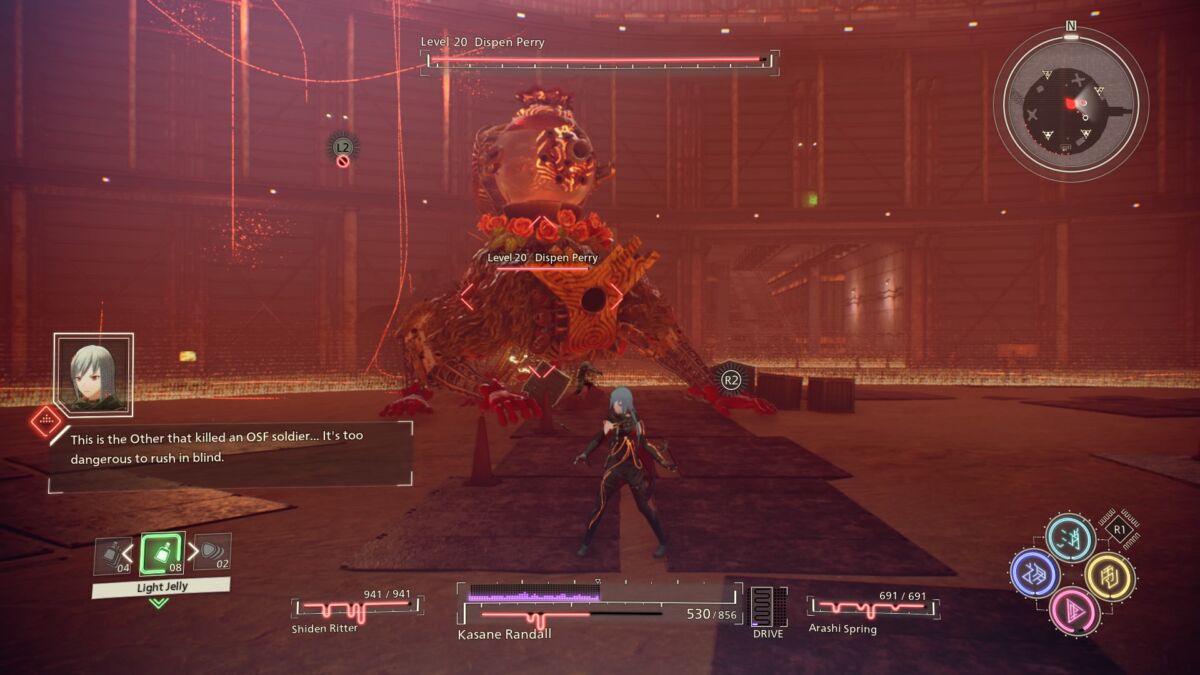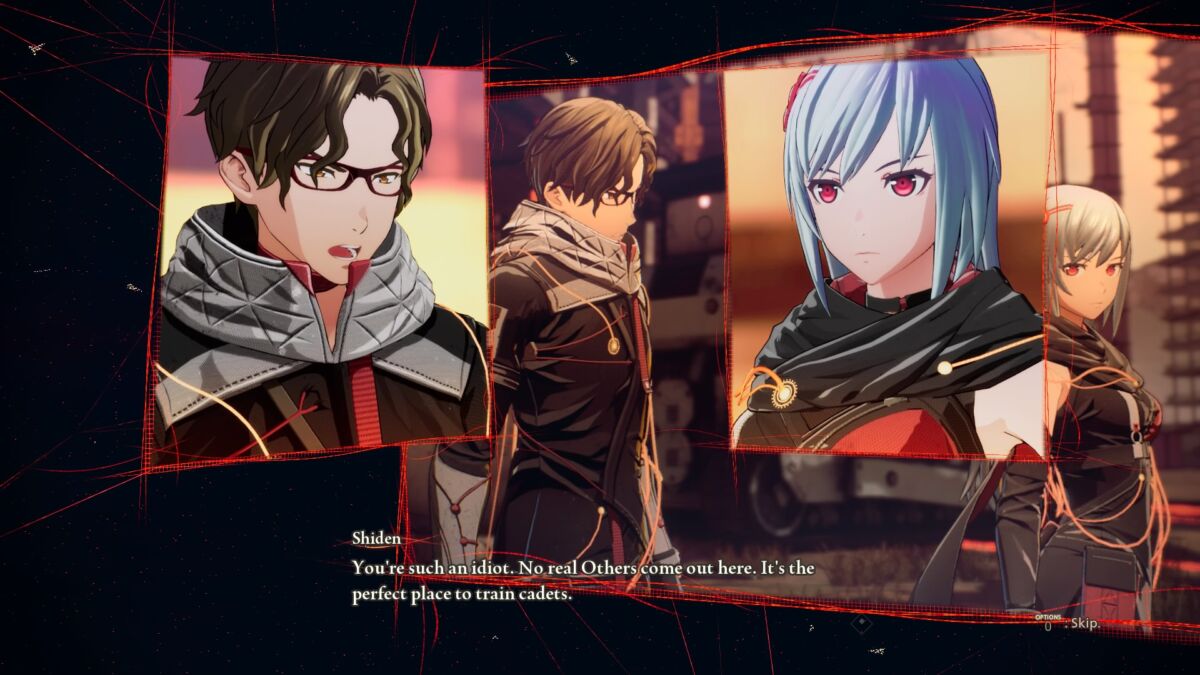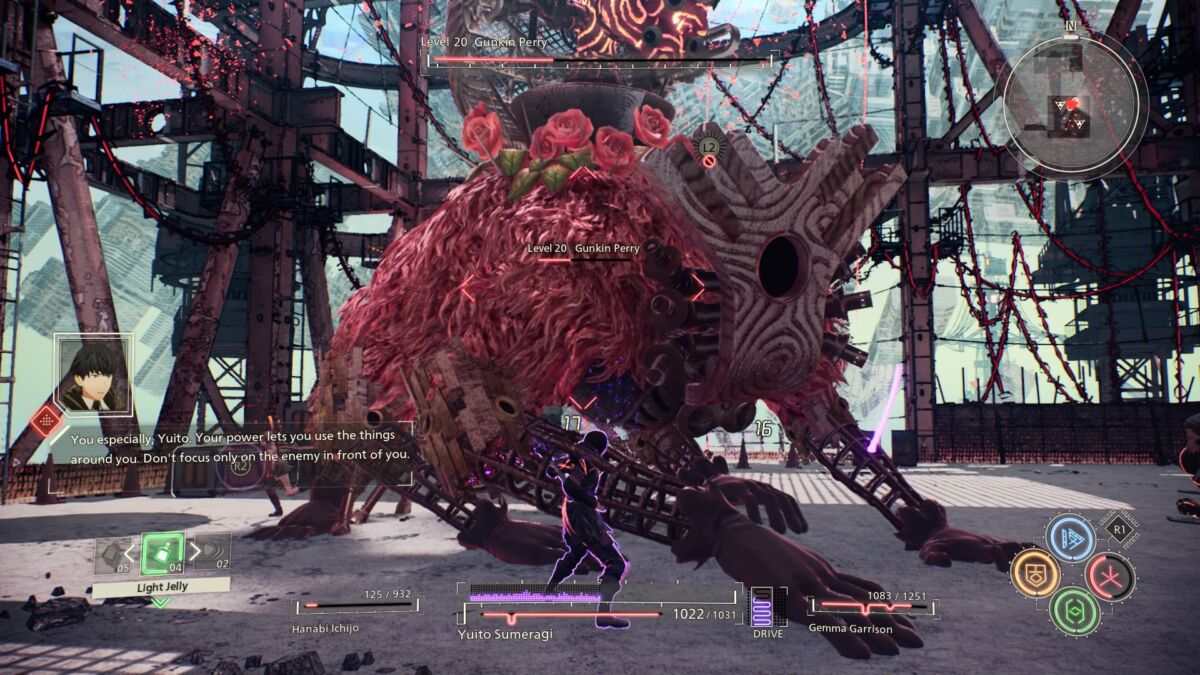Tose and Bandai Namco’s upcoming action-RPG Scarlet Nexus is a big, audacious, shonen anime-inspired affair. The game’s influence from Japanese action animation and manga is immediately apparent in its art style: stylized characters with geometrically impossible hair, swinging massive weapons and throwing variously colored waves of energy at each other. Outside of direct anime adaptations, it’s the most overtly anime-inspired AAA game since 2019’s Souls-like Code Vein, or the action-RPG Astral Chain of that same year. Scarlet Nexus picking up the visual playbook of popular series like Ghost in the Shell or the recent Akudama Drive isn’t anything new in video games, but the game, which recently released a playable demo on Xbox and PlayStation, doesn’t seem content to stick with an aesthetic. Scarlet Nexus, in its gameplay flow and visual storytelling, also wants to feel like a manga.
The game’s visual flourishes move beyond the eastern influence in character design, as cutscenes play out in panels, mirroring the layout of a manga page. Characters’ facial expressions and body language are visible in close-up and at a distance simultaneously in two separate “panels,” and while this choice in presentation might break immersion for some players, it also teaches you what kind of game you’re playing: a game that has read Berserk.

Every character has a distinct design and, in the brief time we spend with them in the demo, enough of a personality to be summed up in a word or two, like “timid mage,” or “hot-headed rival.” Is it familiar? Yes. But that familiarity is part of the cultural resonance of anime/manga-inspired stories, and if players couldn’t instantly pinpoint who in their team of augmented super-soldiers was the Sasuke of the group, then the game would be doing itself a disservice.
Beyond its looks, Scarlet Nexus also strives to capture the feeling of its influences in gameplay. Combat has a very brisk flow to it, with action slowing down or briefly freezing to luxuriate in a splashy finishing move — like stopping to appreciate the art on a particularly impressive splash page while reading comics. The game’s ornate half-steampunk, half-body horror enemies (opaquely referred to as Others) looks cool, the game knows they looks cool, and the game wants you to have plenty of opportunities to drink in the detail of how cool it is to tear them apart with psychic powers.

Narratively, Scarlet Nexus presents players with a choice of two protagonists: Kasane, a young woman who fights with some distance, or Yuito, who swings a katana and works better up close against enemies. The two have distinctly different styles of combat: Yuito’s sword has a really strong sense of weight when you swing it, but Kasane can chain combos together with a lot more ease and fluidity. It’s a fairly standard video game binary, both in gender and in play style: physical attacks or magic, brute force vs. agility.
Both of these characters are archetypes, as many anime protagonists are. Yuito is the bright-eyed naive action boy, and Kasane is the more reserved, introspective soldier. Both of them are ripe for an epic adventure by the end of their respective demo levels, and both feel the right kind of familiar. There’s enough of what’s come before that players can make an easy association to other characters they like and make a connection, but open-ended enough for players to experience the world through their eyes.

Writ large, what makes a game feel like manga, or anime as an adaptation of the same source, can be tough to pin down. Many anime-adaptation games try to just throw a popular IP into a fighting game engine and call it a day, assuming that seeing Monkey D. Luffy on a box is enough to move units. And, for many, that is enough, as this approach does work from a sales perspective. But capturing the spirit of shonen manga is a tougher goal.
The closest term for the general tropes and energy of shonen is Expressionism, an artistic, literary and theatrical movement from the early 20th century. Expressionism, as the name suggests, is about expressing a fundamentally enormous sense of emotion, and leaving reality behind when it cannot accommodate the world-warping power of characters’ states of mind. Think of how in Haikyuu’s high school volleyball games, internal moments of panic can stretch out for minutes, and high-stakes plays can alter the animation style as players get so hyped that their character models get fuzzy outlines or lose their color. People go Super Saiyan in a narrative sense all the time, whether or not they’re in a Dragon Ball story.

For some games chasing the anime/manga feel, this emotional intensity can translate into making characters just ridiculously showy, or packing the screen with more enemies, powers, and UI than any non-superbeing could keep track of. In the demo at least, Scarlet Nexus avoids this pitfall. There might be a lot of enemies and characters onscreen, but their color and shape always frame them clearly against the background. Combat in Scarlet Nexus is always very readable, thankfully, and you never lose track of your character’s position on the battlefield. Like the best manga, clear sightlines and communicative framing keeps all the key players just where the eye can find them.
Scarlet Nexus’ manga aspirations happen to have already paid off, to a degree, as a proper Scarlet Nexus anime is already in the works. The anime adaptation was announced in March, to be produced by Sunrise and distributed by Funimation. Finishing one of the demo’s paths even gives a brief trailer of the anime, and all the characters and action you’ve played through look just as compelling in 2D. Players will be able to see how the game threads the needle of action-rpg combat and shonen manga emotional extremes when the full game is released on June 25th for PC, PS4, PS5, Xbox One, and Xbox Series X | S.
READ NEXT: 20 Best Post-Apocalyptic Games You Should Play
Some of the coverage you find on Cultured Vultures contains affiliate links, which provide us with small commissions based on purchases made from visiting our site.

